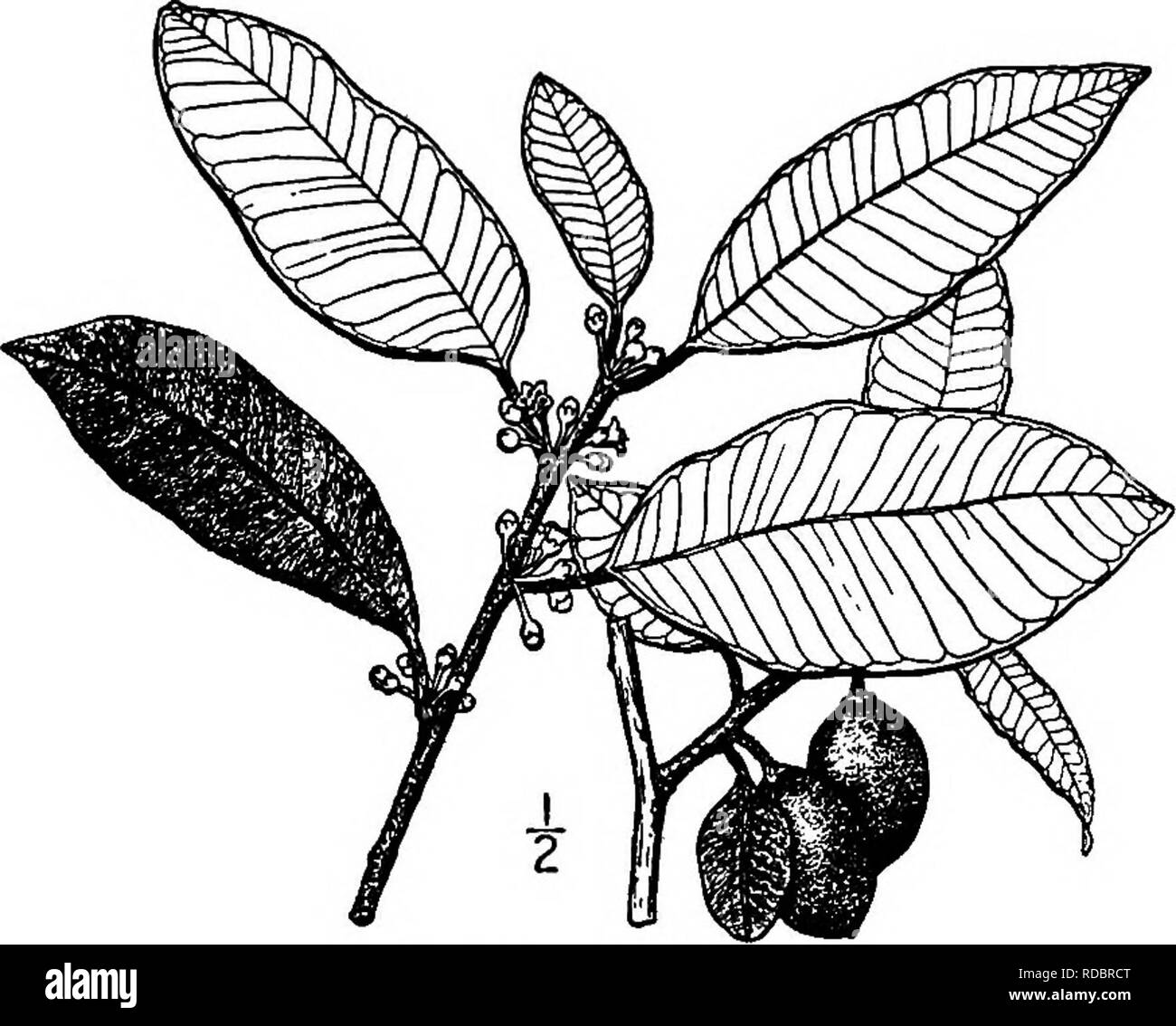. North American trees : being descriptions and illustrations of the trees growing independently of cultivation in North America, north of Mexico and the West Indies . Trees. Satinleaf 773 I. SATINLEAF GENUS CHRTSOPHYLLUM LINN^US Species ChiysophyUtun oliviforme Linnaeus Chryspphyllum monopyrenum Swartz M^±M HIS small evergreen tree or shrub of the West Indies also occurs in peninsular Florida and on the Keys, but is not abundant there; its maximum height is lo meters, with a trunk diameter of 3 dm. The branches are rather stout, ascending and somewhat crooked. The bark is 6 to 8 mm. thick, sh

Image details
Contributor:
The Book Worm / Alamy Stock PhotoImage ID:
RDBRCTFile size:
7.2 MB (340.2 KB Compressed download)Releases:
Model - no | Property - noDo I need a release?Dimensions:
1764 x 1417 px | 29.9 x 24 cm | 11.8 x 9.4 inches | 150dpiMore information:
This image is a public domain image, which means either that copyright has expired in the image or the copyright holder has waived their copyright. Alamy charges you a fee for access to the high resolution copy of the image.
This image could have imperfections as it’s either historical or reportage.
. North American trees : being descriptions and illustrations of the trees growing independently of cultivation in North America, north of Mexico and the West Indies . Trees. Satinleaf 773 I. SATINLEAF GENUS CHRTSOPHYLLUM LINN^US Species ChiysophyUtun oliviforme Linnaeus Chryspphyllum monopyrenum Swartz M^±M HIS small evergreen tree or shrub of the West Indies also occurs in peninsular Florida and on the Keys, but is not abundant there; its maximum height is lo meters, with a trunk diameter of 3 dm. The branches are rather stout, ascending and somewhat crooked. The bark is 6 to 8 mm. thick, shallowly fissured into plates, with a scaly brown surface. The twigs are brownish hairy at first, becoming smooth, reddish brown to gray. The leaves are persistent, leathery, oblong, elliptic or ovate, 3 to 10 cm. long, sharp or short taper-pointed, rounded or abruptly tapering at the base, revolute on the margin, bluish green, smooth and shining with deeply impressed midrib above, silky with shining red brown hairs beneath; the leaf-stalk is stout, about I cm. long. The flowers are small, short-stalked, in few-flowered axillary clusters on the new growth; calyx densely silky, cup-shaped, deeply s-parted, the sepals nearly orbicular, and rounded at the apex; corolla white, 5 mm. across, with 5 suborbic- ular, blunt lobes, without appendages or staminodes; stamens 5, included, their anthers nearly sessile and heart-shaped; ovary 5-celled, narrowed upward into a short style and tenninated by a 5- lobed stigma. The fruit is a nodding, usually solitary oval berry about 2 cm. long, dark purple, its skin thick, tough, and shghtly roughened, its flesh juicy, sweet but insipid, usually i-seeded; seed compressed, about 12 mm. long, Ught brown and shining, with a white, pulpy coat. The wood is hard, dense, strong, light brown, its specific gravity about 0.94. The genus is a tropical one with probably 60 species of trees and shrubs, mostly American; they have milky juice and produce edibl